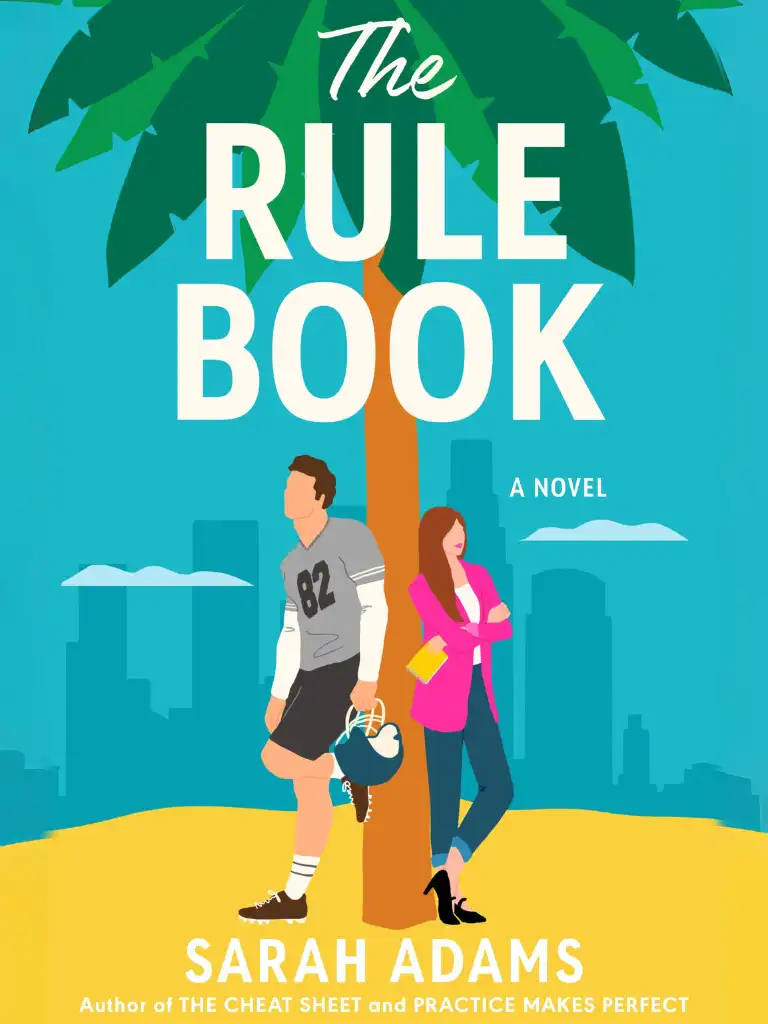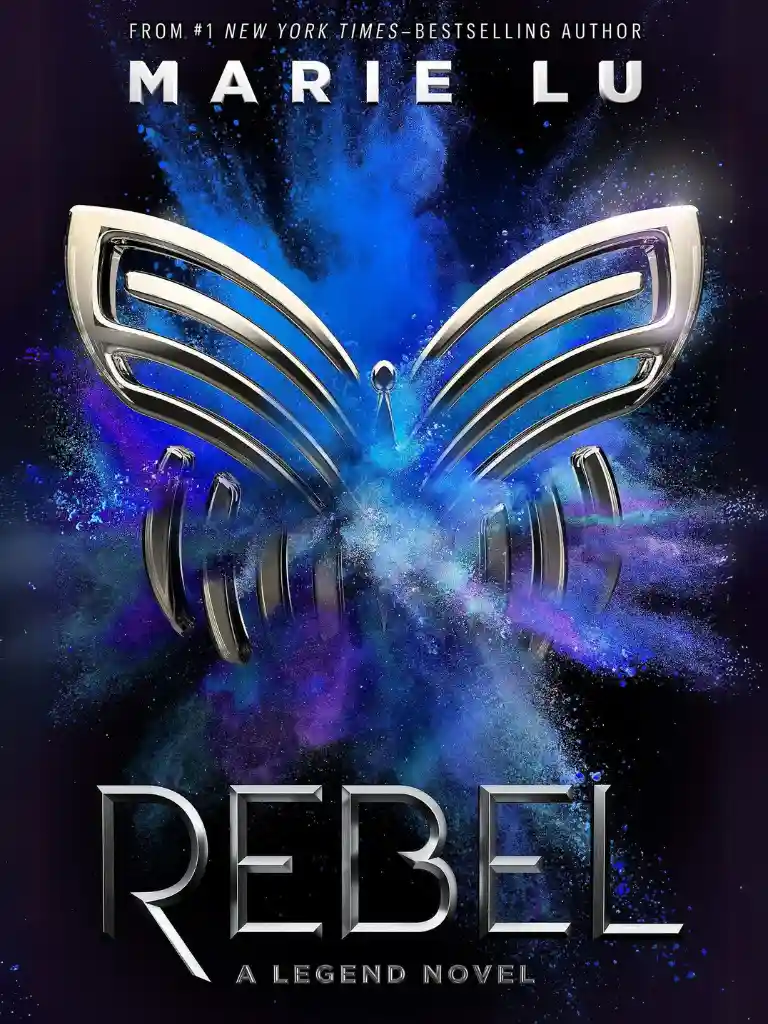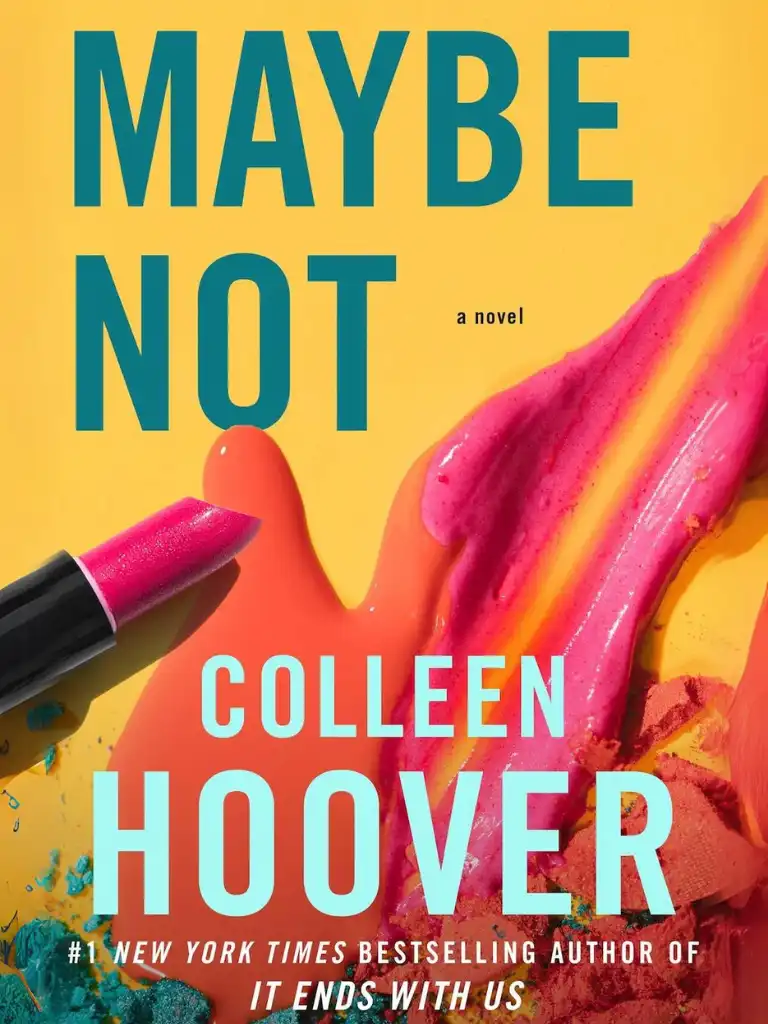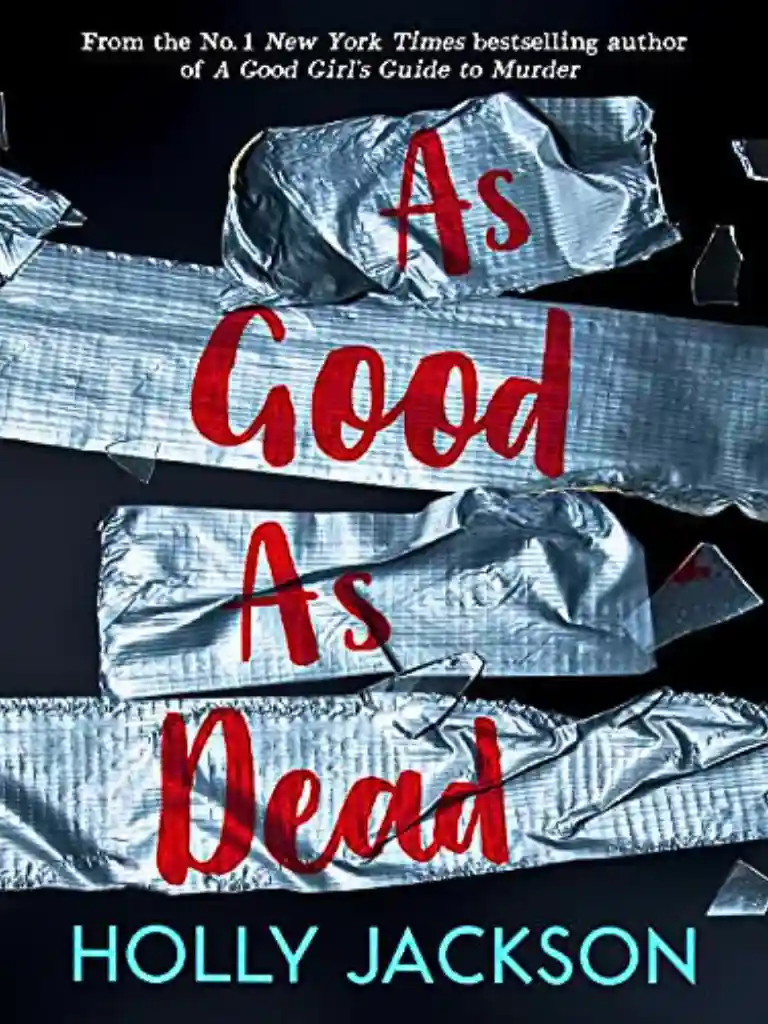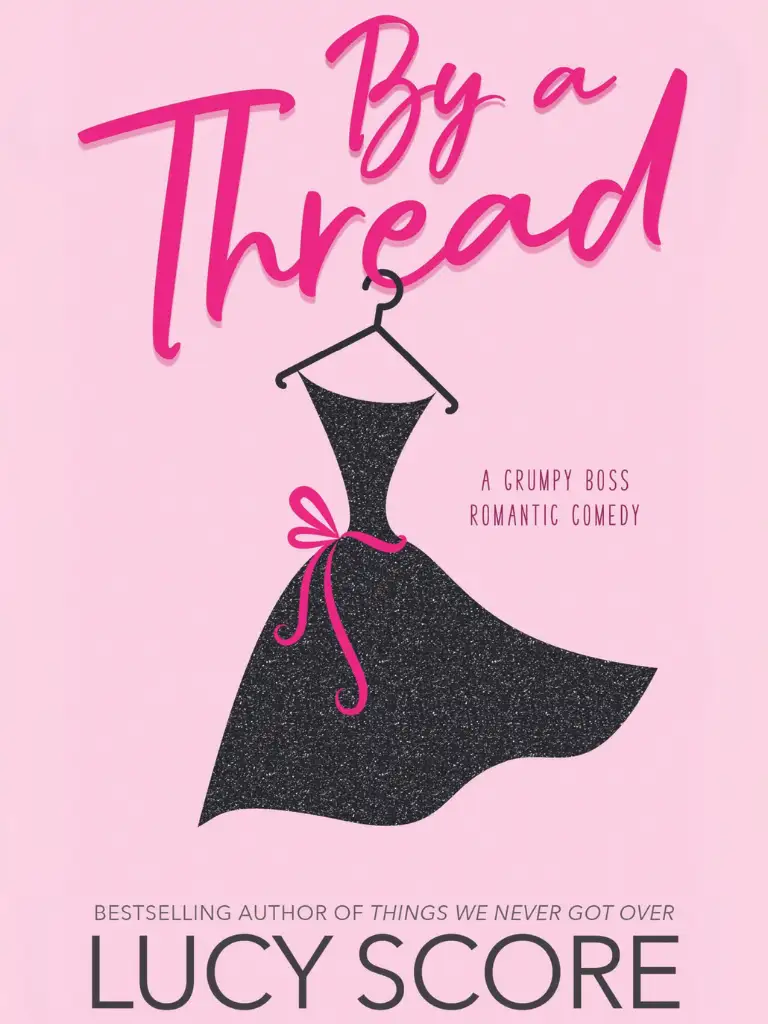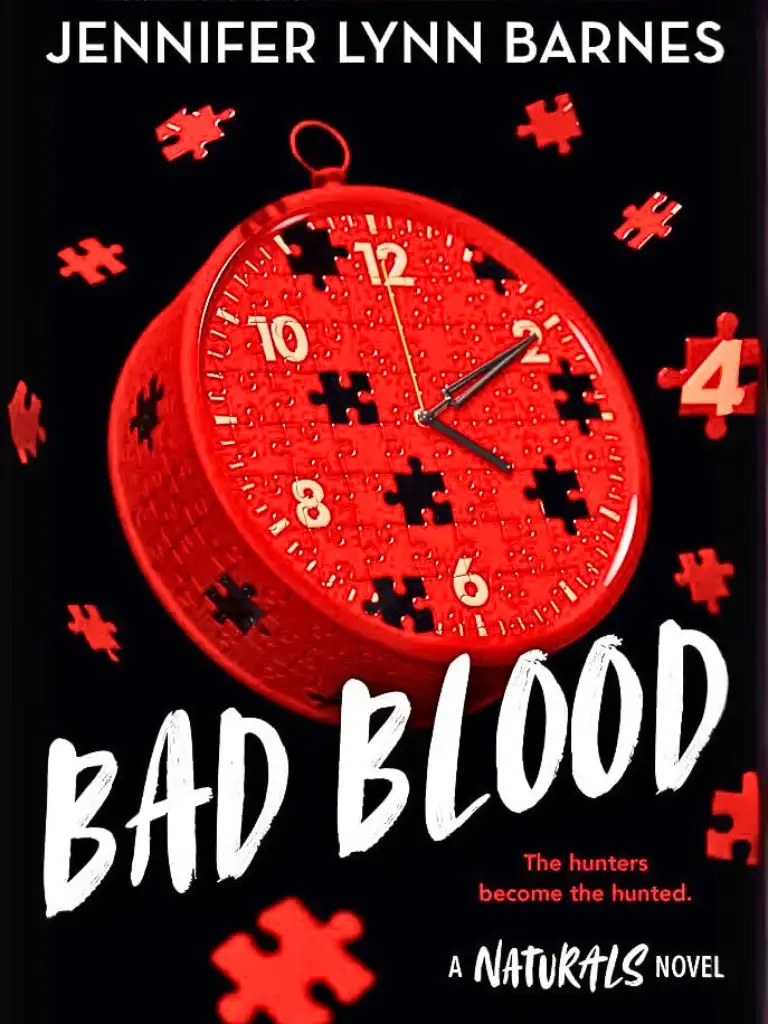THE STORY OF FAHRENHEIT 451
Books were only one type of receptacle where we stored a lot of things we were afraid we might forget. ere is nothing magical in them, at all. e magic is only in what books say, how they stitched the patches of the universe together into one garment for us.
—Ray Bradbury, Fahrenheit 451
THE STORY OF FAHRENHEIT 451
Jonathan R. Eller
Ray Bradbury never really figured out how to learn in a lecture hall or a classroom environment. e printed word seemed far more real to him, and the pages of countless library books formed the core of his education. Bradbury would never attend college; after his 1938 graduation from Los Angeles High School, he spent four years selling evening newspapers at the corner of Norton and Olympic, earning one penny for every three-cent newspaper he sold. But he continued to read voraciously, absorbing a wide range of classics as well as the works of contemporary writers. Sometime in 1944 he read Arthur Koestler’s Darkness at Noon, and from that point on, Fahrenheit 451 was inevitable.
In revealing the underlying terror of Stalin’s show trials, Darkness at Noon became the great cautionary tale for Bradbury. It fueled his subsequent confrontations with intolerant authority, and with those who denied the existence of intolerance. Bradbury’s unpublished speaking notes of the mid-1950s contain his most forceful acknowledgment of this inspiration: “People have often asked me what effect Huxley and Orwell had on me, and whether either of them influenced the creation of Fahrenheit 451. e best response is Arthur Koestler. . . . [O]nly a few perceived the intellectual holocaust and the revolution by burial that Stalin achieved. . . . Only Koestler got the full range of desecration, execution, and forgetfulness on a mass and nameless graveyard scale. Koestler’s Darkness at Noon was therefore . . . true father, mother, and lunatic brother to my F. 451.”
e “intellectual holocaust” revealed by Koestler recharged Bradbury’s own conviction that literature is every bit as precious as life itself. From a young age he was greatly affected by accounts of the burning of the ancient library at Alexandria and the loss of many classical works that we now know only by title or through fragments of surviving parchment. Bradbury virtually lived in the public libraries of his time, and came to see the shelves as populations of living authors: to burn the book is to burn the author, and to burn the author is to deny our own humanity. Koestler’s cautionary tale soon inspired a series of writing experiments about books—and about those who would burn them. But nine years
would pass before the reading public first learned the temperature at which book paper combusts.
Bradbury made notes for a story about book-burning firemen as early as February 1946, but he soon set this project aside. Initially, the path to Fahrenheit 451 led through an unfinished and entirely different story line
—Where Ignorant Armies Clash by Night, which survives only in
fragmentary drafts of a few episodes written at intervals during 1946 and 1947. ese all focus on a nightmare inversion of traditional values in a post-apocalyptic world where death provides the best way out of a ravaged landscape. e modernist lament for lost homelands and lost values weighed heavily on him during this time, and Bradbury briefly experimented with the darker possibilities of the rapidly emerging atomic age: “If you can’t fight the meaninglessness with a religion, then slide along down the chute with it into oblivion. Make a religion of Meaninglessness.” To this end, Bradbury imagined an elite class of public assassins who also performed ritualized burnings of the books and fine art that gave meaning to an earlier age, including the poem that would play a central role in Fahrenheit 451—Matthew Arnold’s “Dover Beach.”
In the fragmentary Ignorant Armies, which takes its title from the last line of Arnold’s poem, a prominent assassin actually reads “Dover Beach” to a massed crowd “in order that you may know what we are destroying,” and subsequently burns all of Arnold’s works as a warm-up to the destruction of what is perhaps the last copy of Shakespeare’s works. But the assassin finds that he cannot take the ultimate step of cultural annihilation by burning Shakespeare and becomes a fugitive from the mob. For Fahrenheit, Bradbury transformed this image into the scene where Fireman Montag reads “Dover Beach” to his wife and her friends.
is reading would become the pivotal point of no return for Montag, who will be betrayed by his own wife for giving voice to the forbidden words.
Where Ignorant Armies Clash by Night ended up a creative dead end for Bradbury, but his metaphor-rich description of the burning of Matthew Arnold’s book offers an early glimpse of the powerful prose he would bring to Montag’s story:
e book turned and fought, like some small white animal caught within the fire. It seemed to want very much to live, it writhed and
sparkled and a small gust of gaseous vapor blew up from it. Leaf by leaf it burned in upon itself, as if hands of fire were turning each page, scanning and burning with the same fire. e pages cringed into black curls and the curls departed on puffs of illumination.
is unsettling image—the death of living words—emerges from a world without hope or meaning, but Bradbury soon realized that predicting this kind of dark future ran counter to his creative instincts. He was more effective at exploring the sources and celebrating the achievements of the human imagination, and gradually began to examine where present-day threats to creativity might lead. At first, these new stories focused on supernatural fiction, a field where he had found his first success as a writer during the early 1940s; his extended tale “Pillar of Fire” (1948) and his story “e Mad Wizards of Mars” (1949; better known as “e Exiles”) warn that such labels as horror, fantasy, and supernatural—genres that were already coming under increased scrutiny in the late 1940s—could be extended to include many of Shakespeare’s works as well as other classics of mainstream literature.
Bradbury’s well-known “Carnival of Madness,” given an even longer life as “Usher II” in e Martian Chronicles, extended the scope of his storytelling to include broader threats to canonical literature and other creative aspects of the cultural tapestry. His vengeful protagonist Stendahl, the millionaire who builds all of Poe’s infamous death devices into a single, Usheresque mansion, uses these horrors to destroy the governing elite responsible for the burning of all art and literature. Stendahl’s account of this future history is clearly a trying-out of the explanations that Professor Faber will convey to Montag in Fahrenheit 451: “ey began by controlling books and, of course, films, one way or another, one group or another, political bias, religious prejudice, union pressures, there was always a minority afraid of something, and a great majority afraid of the dark, afraid of thefuture, afraid of the past, afraid of the present, afraid of themselves and shadows of themselves.”
Bradbury’s earliest sustained images of book burning survive in the fragmentary episodes of his unfinished 1946–47 novel, Where Ignorant Armies Clash by Night. In this postapocalyptic culture where all treasures of the old world are reviled, a volume of Matthew Arnold’s poetry is burned in front of a frenzied crowd as a prelude to the burning of the world’s last volume of Shakespeare’s works. e metaphorical agonies of the burning book, and the secret misgivings of the book burner himself, anticipate the emotions that Bradbury would fully develop in “e Fireman” and Fahrenheit 451.
In revising “Usher II” for e Martian Chronicles, Bradbury added “books of cartoons and then detective books” to the destruction list, an allusion to the earliest targets of local groups and national organizations intent on enforcing behavioral “norms” in the early postwar era. Given these activities and the emerging agenda of the House Un-American Activities Committee in Washington, it required a relatively small leap of the imagination for Bradbury to extend his storytelling into civil liberties. As Bradbury has often noted, “e Pedestrian” provided the final bridge into “e Fireman,” the short novella that later bloomed into Fahrenheit 451. By 1950, he had come to view the pedestrian as a threshold or indicator species capable of foretelling things to come—if the rights of the pedestrian were threatened, it would be an early indicator that broader freedoms of thought and action were also at risk.
is conclusion was deeply rooted in personal experience. In 1941, while walking through Pershing Square late at night with friend and occasional coauthor Henry Hasse, Bradbury had his first relatively mild encounter with police. e specific incident that sparked “e Pedestrian” involved a similar late-night walk with a friend along Wilshire Boulevard near Western Avenue sometime in late 1949. Bradbury often wrote and spoke about being questioned that evening by a passing patrolman, and usually described as well his somewhat confrontational response (“What am I doing? Just putting one foot in front of the other . . .”). He wrote “e Pedestrian” while the emotions were still close at hand, and in March 1950 sent it on to his New York agent, Don Congdon. Although it didn’t reach print in e Reporter until August 7, 1951, its composition in the early months of 1950 predates Bradbury’s conception of “e Fireman.”
Sometime in the spring of 1950, Bradbury suddenly envisioned his solitary pedestrian, considered a dangerous deviant in a culture where virtual-reality entertainments had replaced evening walks, in an entirely different role and gender. e pedestrian became young Clarisse McClellan, a reader of forbidden books, a questioner of authority, and a solitary late-night walker. She turns a corner and encounters Guy Montag, fireman, walking home from his station shift in a future where firemen set fires rather than prevent them. She smells the kerosene on his tunic and says, “I know what you do.” Montag does not know her, but her fleeting companionship kindles a new joy in living and helps him understand why he has secretly hidden some of the books that he is sworn to destroy by fire. is time, Bradbury was able to avoid the nihilistic dead ends of Ignorant Armies and instead developed a protagonist who could survive, and, with other survivors, preserve the forbidden literatures that define what it means to be human.
During the summer of 1950, Bradbury composed the first draft of “e Fireman,” at this point titled “Long After Midnight.”1 It was the result of nine days of self-enforced isolation in the UCLA Library’s subterranean typing room, alternating half-hour stints at the dime-a-dance machines with inspirational walks through the literature collections on the upper levels. Bradbury soon sent a subsequent hand-revised typescript, now titled “e Fire Man,” to Don Congdon. In early September 1950 Congdon had a clean copy prepared and began to circulate it. His initial impulse was to start with Amazing Stories, one of
the oldest magazines in the pulp tradition of science fiction and fantasy, but he and Bradbury quickly decided to try mainstream magazines first, where Congdon had long-standing connections as both an agent and an editor. In quick succession, Esquire, the Canadian weekly Maclean’s, e Saturday Evening Post, and Cosmopolitan all declined the novella, which now carried the slightly shortened title “e Fireman.” Congdon then sent it on to Town & Country, planning to submit it to Astounding if it failed to find a home there.
A variant opening page for “Long After Midnight,” the first complete draft of the Fahrenheit 451 concept. is page was probably composed around August 1950, close to the time that Bradbury produced the complete draft in the UCLA library typing room. e “Long After Midnight” stage of work opens with a vivid nightmare of discovery as Leonard (not yet Guy) Montag is turned in by a neighbor boy for hiding and reading forbidden books. is opening scene disappears from all subsequent versions of Fahrenheit 451.
But while “e Fireman” was under consideration at Town & Country, Horace Gold, publisher of the recently launched magazine Galaxy Science Fiction, expressed strong interest in the novella. In mid-October Town & Country declined, and Gold immediately purchased serial rights for Galaxy. Bradbury made some revisions to the first half of the novella during November 1950, but refused Gold’s suggestion to corrupt the memories of Montag and the Book People. Gold’s idea was to render Montag unable to recall his texts without massive, Joycean juxtapositions of commercial ads and unrelated literary fragments— corruptions that the other Book People would be unable to detect or repair. Bradbury was convinced that such a pessimistic turn would destroy the restorative, healing conclusion that he had worked so hard to kindle out of the ashes of Ignorant Armies, and he published “e Fireman” without substantive changes beginning in the February 1951 issue of Galaxy Science Fiction
e completion of “e Fireman” capped a miracle year of creativity
for Bradbury. Between summer 1949 and summer 1950, he had also transformed and bridged many of his Martian stories into e Martian Chronicles and woven a looser but no less compelling tapestry of unrelated science fiction stories into e Illustrated Man collection, which was released in February 1951. His newest stories were now reaching the pages of Collier’s, e Saturday Evening Post, and Esquire for the first time, extending his popularity in the mainstream magazine market. But even as he moved ahead with new stories, Bradbury began to consider refashioning “e Fireman.” Once again, Arthur Koestler’s Darkness at Noon provided the initial spark. After seeing Sidney Kingsley’s award-winning Broadway dramatization of Koestler’s novel during his June 1951 trip to New York, Bradbury was inspired to expand “e Fireman” in ways that spoke to the increasing tensions of the times.
Bradbury and Congdon wanted to package “e Fireman” with “e Creatures at Time Forgot” (1946) and “Pillar of Fire” to form a single-volume trio of science fiction novellas that had been published but never collected in book form. is book concept found little interest among publishing houses until August 7, 1952, when Congdon had dinner with Stanley Kauffmann of the newly founded Ballantine Books. Congdon was immediately impressed with an unusual aspect of this venture: Ian Ballantine’s goal was to provide both quality hardbound and mass-market paper printings from a single publishing house—the main
advantage being that his authors would not have to share the paperback royalties with the original hardback publisher, as was then the prevailing practice. It was a complicated gamble for Ballantine, involving printing and distribution arrangements with other publishers, but for a few years it worked well enough to attract a number of mainstream and genre authors.
Bradbury signed a contract with Ballantine in mid-January 1953, but by this time the novella collection had taken on a very different focus. Of the three proposed works, only “e Fireman” remained; the collection was now to be filled out by eight of Bradbury’s newer short stories, bound together under a title as yet to be determined. But Bradbury’s planned expansion of “e Fireman” would form the core of the collection, and he wanted a title allusion to the self-ignition temperature for book paper—an allusion that would transcend the character-focused title of the original work.
His earliest known working title was Fahrenheit 270, but other variants were also in play; his good friend Joseph Mugnaini, an experienced illustrator, was already at work on the cover art, producing preliminaries titled Fahrenheit 204 and Fahrenheit 205. On January 22, after a fruitless sequence of telephone calls by Bradbury to several university physics and chemistry departments, a single call to the Los Angeles Fire Department revealed the book-paper combustion point to be 451 degrees Fahrenheit.
As Bradbury revised “Long After Midnight” for publication as “e Fireman,” he deleted Montag’s opening nightmare and began the narrative with the next scene—a tense late-night shift in the firehouse, where Montag and his colleagues are playing cards. Bradbury’s handwritten revisions carry into the February 1951 issue of Galaxy magazine, shown on the following page. Courtesy of the University Archives & Special Collections Unit, Pollack Library, California State University, Fullerton.
Expansion of the novella proved surprisingly difficult Bradbury spent the spring and much
of the summer of 1953 transforming “e Fireman” into Fahrenheit 451.
Mugnaini developed a cover concept from two of his own paintings that Bradbury found particularly relevant: one an angular rendering of Don Quixote, the other an illustration of a newsprint-clad Diogenes.
e resulting fireman, wearing newsprint armor amid a pile of burning books, would become a popular and recurring design for many subsequent editions of Fahrenheit 451 down through time. But expansion of the novella proved surprisingly difficult; many discarded pages, preserved in the Pollak Library at California State University, Fullerton, mark his painfully slow progress through the spring of 1953. Finally, during June 1953, he decided to return to the UCLA Library’s typing room for what ended up being another nine-day stint, once again inserting a dime for every half hour of typewriter use.
Ballantine and Kauffmann were concerned when Bradbury’s initial April deadline passed, but were greatly relieved when Congdon forwarded the first 126 pages of the final typescript. is bought more time for Bradbury to work through the expansions of the rest of the novel, and he sent periodic installments through July, when the final pages of the fifty-thousand-word novel reached New York. Now it was Ballantine’s turn to act under pressure; he had scheduled an October 1953 release, and had arranged more publicity and review coverage than he had done for any of his earlier titles. Ballantine sent Kauffmann and the galley sheets to Los Angeles, where he worked with Bradbury from August 5 through 8 on final revisions and corrections. One crucial aspect of format also had to be settled: the full expansion of the “Fireman” novella into Fahrenheit 451 necessitated all but two of the projected eight companion stories be left out of the collection. Bradbury decided to include “And the Rock Cried Out” and “e Playground” to comply with the story-collection concept of the volume; most subsequent editions, as well as reprints and reissues of the Ballantine first edition, deleted the companion stories entirely and presented the novel as a stand-alone title.
Within weeks, Ian Ballantine sent several hundred hardbound copies to review editors; the hardbound print run was designed to reinforce the quality of the content in the minds of the major magazine and newspaper reviewers, as well as the established ABA bookstore chains that privileged hardbound trade titles. But Ballantine took the unprecedented step of distributing six thousand copies of the mass-market paperback to other reviewers, editors, authors, and distributors in
an effort to get maximum exposure for the book prior to its October release. It was an unusual step for any publisher, let alone a new enterprise trying to carry the burden of both hardbound and paperbound book publishing. But Ballantine was an experienced publisher who had founded the highly successful Bantam Books nearly a decade earlier, and he knew what he was doing. He also knew that the troubled times demanded a book like Fahrenheit 451.
In fact, world events seemed to form a grim backdrop for Bradbury’s revisions. His transformation of “e Fireman” into Fahrenheit 451 extended through two of the most disturbing announcements the world had known since the dark days of World War II. In late October 1952, the United States proclaimed the successful test of a hydrogen bomb, a weapon far more destructive than the atomic bombs that had ended the war in the Pacific. en in July 1953, the Soviet Union unexpectedly exploded its first hydrogen bomb, an ominous indicator that the West was no longer ahead of the Eastern Bloc superpower in terms of destructive potential. e Doomsday Clock, a chilling metaphor whose image appears on the cover of the Bulletin of the Atomic Scientists, reached two minutes before midnight. e hands would not come as close to midnight again for the rest of the twentieth century.
“‘THE FIREMAN’ AS A BOOK?” Framed in typical Bradbury doodles, his brainstorming list of projects for 1951–52 includes his earliest known intention to expand “e Fireman” into a novel-length work of fiction. As the list indicates, Bradbury was somewhat concerned that e Illustrated Man, published in February 1951, was his only new book that year. His June 1951 encounter with the Broadway adaptation of Arthur Koestler’s Darkness at Noon, the novel that most directly inspired “e Fireman,” finalized his intention to expand his novella. From the Albright Collection; reproduced courtesy of Donn Albright and Ray Bradbury.
Bradbury’s revision and expansion doubled the size of the original work, but the result offered far more than a doubled word count; the heightened domestic and international tensions of the real world were reflected in the way Bradbury intensified Montag’s quest to read and understand the books he had sworn to destroy. As he worked, Bradbury found that the best way to increase the thematic impact of this quest was to concentrate on expanding Montag’s interactions with the other major characters—the young Clarisse McClellan, the secretive Professor Faber, and Fire Captain Leahy, the towering figure who represents Montag’s potential future.
e only significant structural change involved the opening scenes, and Bradbury began his revisions there. “e Fireman” had opened in the firehouse, with Montag and the other firemen playing cards, ready to answer the first call to burn. Bradbury now realized that Clarisse was the key to the entire story, and as he expanded Montag’s first meeting with her, he also moved the scene to the beginning of Fahrenheit 451. Even before his breakthrough in the UCLA Library, he described this new insight in a letter to his British publisher, Rupert Hart-Davis: “[T]he young girl who lives next door is really the pivotal character; without her and her influence . . . our Fire Man may not have changed when he did.
e story, in order to achieve balance, should show e Fire Man enjoying his work, meeting the young neighbor, and changing, beginning to think what in hell he’s been up to for a number of years. is way we get some sort of character growth in the tale.”
Bradbury also needed to expand Fire Captain Leahy’s cultural commentaries. In his final form, Leahy (renamed Beatty) brings out a far richer description of the way the world became a mindless consumerist society incapable of saving itself from looming nuclear annihilation. And during the transformation of the text, Bradbury’s “Seashell” radio earpieces provided a new plot element—Professor Faber’s two-way communicating device—that kept Montag and his new mentor in contact during the crucial stages when Montag begins to think things out for himself. Beatty senses what he terms a new cleverness in Montag, and holds him in check by relating a “dream”—an imaginary debate masking a one-sided and very persuasive attack on the dangers of book-learned wisdom.
rough the secret earpiece, Faber’s small-voice counterpoint urges Montag to stand up to this debate, which represents the greatest enemy
of all: “But remember that the Captain belongs to the most dangerous enemy to truth and freedom, the solid unmoving cattle of the majority.” As Faber observes, it’s now up to Montag to decide for himself “which way to jump, or fall.” is was all new text that greatly enhanced the drama of the story and allowed Bradbury to raise the intensity to match the rising political tensions of the times.
Bradbury was an ocean away when Fahrenheit 451 was published in America. More than a month before the October 1953 release, Bradbury had accepted an offer from legendary Hollywood director John Huston to go to Ireland and London to write the screenplay for a new motion-picture adaptation of Herman Melville’s cinematically challenging novel Moby-Dick. Bradbury would not return to the United States until the end of May 1954, when he would find that Senator McCarthy’s speaking engagements were no longer filled to capacity. Fahrenheit 451 had not become a best seller—nonconformist literature sells best when there is no fear in the land—but the reviews were generally very favorable. New York Times reviewer Orville Prescott, who had not read any of Bradbury’s earlier books, became a lifelong fan. Other favorable voices included the eminent Columbia University scholar and radio reviewer Gilbert Highet and future British poet laureate John Betjeman.
In its final form, Fahrenheit 451 opens with Montag’s solitary late-night walk home, and his first meeting with his young neighbor, Clarisse McClellan. In the final typescript (top), just above his description of Clarisse, Bradbury attached a last-minute insert (bottom) containing the very first reference to Montag’s hidden books and the first mention of Montag’s mentor, Professor Faber. From a carbon of the original submission in the Albright Collection; image courtesy of Donn Albright and Ray Bradbury.
Chicago novelist Nelson Algren, approaching the height of his popularity as a best-selling champion of harsh midcentury realism, found Fahrenheit 451 extremely relevant and attuned to the more disturbing political and social tendencies of the time. e book also advanced Bradbury’s reputation in broader literary circles: Nobel laureate Bertrand Russell was greatly impressed by the implications of the novel, and in early April 1954 he hosted Bradbury for an evening at his home during Bradbury’s stay in London. Upon his return to the United States, Bradbury received a literary prize for Fahrenheit 451 at the annual ceremony of the American Academy of Arts and Letters.
In spite of these recognitions, the more subtle threats to the novel’s longevity remained for decades. In one of the great ironies of literary history, Fahrenheit 451 was itself silently modified in the 1960s to make the novel more likely to win school-board approval as a classroom text. A special “Bal-Hi” edition, first printed in 1967, retained the typesetting of the first edition, but the text was altered at nearly a hundred points to remove profanity and references to sexuality, drinking, drug use, and nudity.7 is version was never intended to replace the mass-market paperback, but beginning in 1973 the censored text was accidentally transferred to successive printings of the commercial text. For the next six years no uncensored paperback copies were in print, and no one seemed to notice it. Students eventually noted the differences between their school texts and older mass-market printings and brought this mystery to Bradbury’s attention. Since 1979 new typesettings of the restored text—and only the restored text—have reached print.
Fortunately, the censorship episode did not obscure the universal
message that Bradbury had envisioned for Fahrenheit 451 from the beginning. Bradbury was initially inspired by Arthur Koestler’s riveting exposé of Stalin’s political terrors and finally motivated to write by the emerging climate of fear during the early years of the Cold War. His hatred of all totalitarian regimes came into sharp focus in his “Day After Tomorrow” essay, published in e Nation just as he was about to finish the final draft of Fahrenheit 451:
Consider the similarity of two books—Koestler’s “Darkness at Noon,” laid in our recent past, and George Orwell’s “1984,” set in our immediate future. And here we are, poised between the two, between a dreadful reality and an unformed terror, trying to make such decisions as will avoid the tyranny of the very far right and the tyranny of the very far left, the two of which can often be seen coalescing into a tyranny pure and simple, with no qualifying adjective in front of it at all.
As the McCarthy era’s climate of fear slowly receded in America, it became clear that Bradbury had succeeded in dramatizing important ideas—fundamental ideas that define our humanity—with vitality, intensity, and emotional impact. Over time, Fahrenheit 451 even surpassed the enduring popularity of e Martian Chronicles, e Illustrated Man, and his more nostalgic Dandelion Wine. Sixty years out,
Fahrenheit 451 has come to symbolize the importance of literacy and reading in an increasingly visual culture, offering hope that the wonders of technology and the raptures of multimedia entertainments will never obscure the vital importance of an examined life.
º º º
Jonathan R. Eller is Chancellor’s Professor of English and Director of the Center for Ray Bradbury Studies at Indiana University–Purdue University, Indianapolis. His most recent book, Becoming Ray Bradbury, examines Bradbury’s early life and career, culminating in the publication of Fahrenheit 451.
NOTES
In his “Afterword” to the more recent Ballantine trade and mass-market paperback editions of Fahrenheit 451, Bradbury states that this creative burst of typing occurred in the spring of 1950. He probably began work on this project during the spring, but his correspondence of the period strongly suggests that the UCLA typing sessions occurred during August 1950, just after Bradbury moved his family from Venice Beach to Clarkson Road in Los Angeles.
e preparation and shopping of the “Fireman” manuscript is documented in Don Congdon to Ray Bradbury, 13 and 21 September, 20 October, and 7 and 10 November 1950, Albright Collection.
Gold’s comments on the text and on marketing “e Fireman” are preserved in Horace Gold to Ray Bradbury, 30 October, [ca. November], and 21 December 1950, Albright Collection. In the spring of 1954, during Bradbury’s first visit with celebrated Renaissance art authority Bernard Berenson in Florence, Italy, Berenson suggested a similar scenario in which the Book People misremember the texts.
is was at first a subconscious impulse: “I left the theater, unknowingly, with child. Various short stories and the novel were inevitable.”
At the time Bradbury was under contract with Doubleday for his next novel, and Ballantine was obligated to keep the expansion of “e Fireman” in the context of a story collection. Doubleday’s subsequent publication of Dandelion Wine (1957) obviated the need for this distinction; of the many later trade editions of Fahrenheit 451, only Simon & Schuster’s 1967 hardbound edition retained Ballantine’s original companion stories.
Ray Bradbury to Rupert Hart-Davis, 26 February 1953, Hart-Davis Collection, University of Tulsa, Tulsa, Oklahoma.
e first and most comprehensive analysis of the Bal-Hi changes to Bradbury’s text is George
R. Guffey’s “Fahrenheit 451 and the ‘Cubby-Hole Editors’ of Ballantine Books,” in George E. Slusser, Eric S. Rabkin, and Robert Scholes, eds., Coordinates: Placing Science Fiction and Fantasy (Carbondale, IL: Southern Illinois University Press, 1983), 99–106.
Ray Bradbury, “e Day After Tomorrow: Why Science Fiction?” e Nation (May 2, 1953): 364–67.
Bradbury’s first extended expression of his purposes in writing science fiction appeared in the May 2, 1953, issue of e Nation. Editor Carey McWilliams had requested this article for an issue of e Nation that focused on literature and books; in response, Bradbury opened his article with a lengthy prologue describing how the radio earpieces he was creating during his revision of “e Fireman” were already appearing, quite independently of his work, among pedestrians he had recently encountered near his home. Bradbury’s reflections on this phenomenon, excerpted here along with major points from his essay, were composed just as he was transforming “e Fireman” into Fahrenheit 451.


